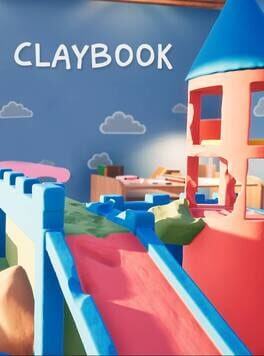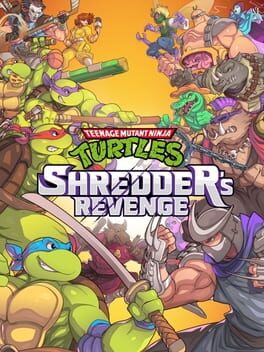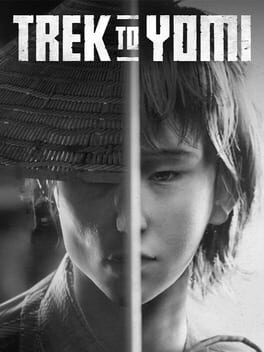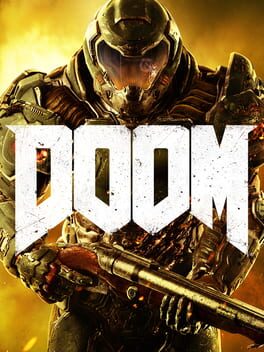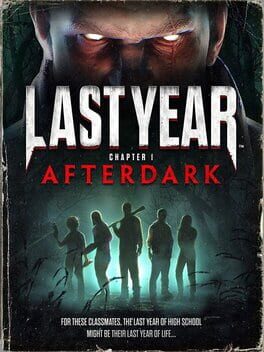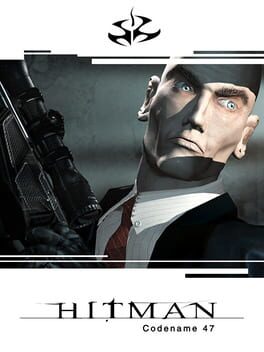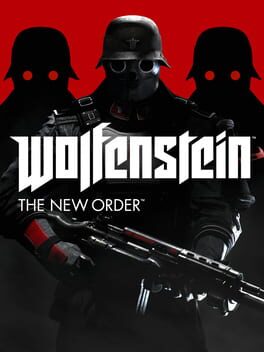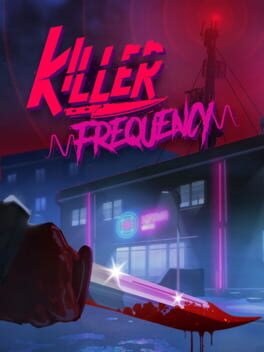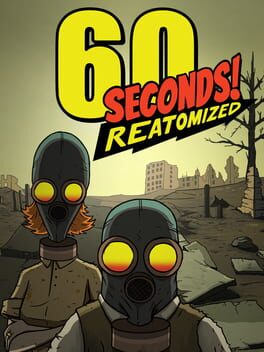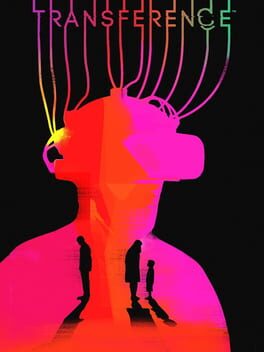Rezlo
BACKER
2007
Surprise, surprise, old Valve knocks it out of the park again with 2007’s Portal. Housing only two characters in the whole game, Portal is as minimal as the clinically sterile chambers you traverse. Which is used spectacularly, as both story and puzzles are dispensed in the perfect amount from room to room. Using little else besides a lovable cube and your trusty Portal gun, you’re asked to solve a series of physics puzzles to progress beyond each door in the facility you find yourself in. Each puzzle is relatively short, but gets slightly harder each time as new mechanics are introduced. And for as common as it is for puzzle games to have at least one frustrating section, Portal never approached boring, aggravating or overly complicated once in my entire playthrough. It’s like Valve genetically engineered the ideal 5-10 minute gameplay loop that asks the user to use just enough of their brain to be engaging. It’s never immediately clear what to do, but it feels like a breeze with how fun it is to tinker around for the solution.
I don’t normally go for the whole quirky, sarcastic killer humor. It often feels different or edgy for the sake of being different or edgy. Here, it’s equal parts funny and satisfying to overcome GLaDOS’ murder attempts as she promises us infantile gifts for our cooperation. Her increasingly mask-off murderous intent and infrequent monologuing is a hearty scoop of levity that gives us a clear reason for doing what we’re doing. The facility losing its cleaner facade as she gets angrier with your attempts to escape is both a perfect mirror of her mental state as well as a fun peeling back of this micro-world in an impressively eerie way. I implore anyone to give Portal a play. It’s short, easy to follow, and never has a dull moment.
I don’t normally go for the whole quirky, sarcastic killer humor. It often feels different or edgy for the sake of being different or edgy. Here, it’s equal parts funny and satisfying to overcome GLaDOS’ murder attempts as she promises us infantile gifts for our cooperation. Her increasingly mask-off murderous intent and infrequent monologuing is a hearty scoop of levity that gives us a clear reason for doing what we’re doing. The facility losing its cleaner facade as she gets angrier with your attempts to escape is both a perfect mirror of her mental state as well as a fun peeling back of this micro-world in an impressively eerie way. I implore anyone to give Portal a play. It’s short, easy to follow, and never has a dull moment.
2018
A good game design student’s final project, not so much a full experience that ought to be paid for. I saw Claybook a few years ago on some random youtuber’s indie showcase. It looked cute so I picked it up for cheap. The fundamental concept is rolling around a kid’s clay tabletop as you transmorph into different shapes and rewind time to fulfill mission goals. You might change into a sphere to roll up a ramp, or use a cube and rewind time to create steps to climb. You can also burrow in something to effectively “erase” certain clay structures. Some goals may be to “erase” certain markers on the map, or fill a reservoir with liquid by opening a line up. The problem is the game is finicky, imprecise, and frustrating in its traversal.
Everytime you move you’re degrading the environment by slightly indenting the ground, forcing you to figure things out with little backtracking. The fluid physics are awful and involved in the worst mission objectives in the game. The completion counter is downright inaccurate at times, forcing you to do more than necessary just to get to the next level. And beyond the tutorial, they don’t introduce any cool additions or settings. Any mission or shape they do add is just more and more excruciating to interact with. When I started off I knew how short the game was so I created a goal to 100% it. By mission three I abandoned that mission. Maybe a little more time in the oven and more collaborators would have saved this game from an eternal damnation of collecting dust on the shelf.
Everytime you move you’re degrading the environment by slightly indenting the ground, forcing you to figure things out with little backtracking. The fluid physics are awful and involved in the worst mission objectives in the game. The completion counter is downright inaccurate at times, forcing you to do more than necessary just to get to the next level. And beyond the tutorial, they don’t introduce any cool additions or settings. Any mission or shape they do add is just more and more excruciating to interact with. When I started off I knew how short the game was so I created a goal to 100% it. By mission three I abandoned that mission. Maybe a little more time in the oven and more collaborators would have saved this game from an eternal damnation of collecting dust on the shelf.
2022
A high-intensity brawler that’s best played with a controller, Sifu is not to be underestimated by its level count. Its non-regenerative health, tough bosses, and emphasis on learning from past mistakes make for a sizable summit. To boost my point, Sifu uses a respawn mechanic that has you age more each time you fail, lowering your health but upping your damage as you grow older, and providing a firm game over after failing past age 70. Since your health carries over from your best runs between all five missions, your ultimate goal is to complete the game with the lowest possible age. This is the ultimate source of Sifu’s challenge. The fighting itself is sufficiently difficult, and my best advice to give is to practice defense before focusing on offense. Learn the basic mook moves, and then move up to memorizing the boss timings. If you can consistently parry and dodge, and use weapons whenever you find them, you’ll have a huge leg-up in the game.
To be clear, even knowing this you will fail a lot. You will have moments of frustration. You will memorize every room in every mission. Yet it never got old for me. Sifu is the type of game that cultivates determination. I spent hours replaying the same level over and over without getting bored of it. I could feel the progress I was making as I did better each time. Of course, It helps that each mission has a distinct theme that works perfectly to encompass a unique element and vibe. Simply put, Sifu isn’t a game you play. It’s a game that plays you. I don’t even want to know how many gallons of sweat I shed trying to improve my runs. But after over a dozen runs I could finally see the light at the end of the tunnel. I went the spare all enemies route and eventually managed to beat the final boss at only my early 30s. Let me tell you, scarce are the moments above finally hitting those end credits after over 20 hours playing the game. I can comfortably say that Sifu was well worth the 30 bucks.
If you fancy the relatively simple but reactive combat of Sifu and are still itching for content, there’s also modifiers and a recently added Arena mode for more scenarios to pick from. Those are all auxiliary bonuses though. The game more than stands on its own.
To be clear, even knowing this you will fail a lot. You will have moments of frustration. You will memorize every room in every mission. Yet it never got old for me. Sifu is the type of game that cultivates determination. I spent hours replaying the same level over and over without getting bored of it. I could feel the progress I was making as I did better each time. Of course, It helps that each mission has a distinct theme that works perfectly to encompass a unique element and vibe. Simply put, Sifu isn’t a game you play. It’s a game that plays you. I don’t even want to know how many gallons of sweat I shed trying to improve my runs. But after over a dozen runs I could finally see the light at the end of the tunnel. I went the spare all enemies route and eventually managed to beat the final boss at only my early 30s. Let me tell you, scarce are the moments above finally hitting those end credits after over 20 hours playing the game. I can comfortably say that Sifu was well worth the 30 bucks.
If you fancy the relatively simple but reactive combat of Sifu and are still itching for content, there’s also modifiers and a recently added Arena mode for more scenarios to pick from. Those are all auxiliary bonuses though. The game more than stands on its own.
2006
Going back and visiting old-ish games it’s easy to look back with the benefit of retrospect and judge what aged well and what didn’t. Just Cause (2006) falls firmly into the second category. It begins as every Just Cause does after, with Rico Rodriguez being deployed as a one-man army to an island to sow discord and overthrow the dictator of the week. Sweet. it’s silly, it’s stupid, it’s awesome. It’s an 80s action movie that you can actually play. The problem from there is the amount to do. You can steal vehicles like aircrafts and cars, do repetitive side missions where you walk through a town and shoot enemies, base jump from high points and parachute….. and that’s about it. The main differentiator is the possession of a grappling hook that you can use to hook onto vehicles. I’m not sure if it’s a limitation of the technology or the developer’s imaginations, or maybe I’m spoiled by the sequels but the grappling hook blows. You must manually equip it so no shooting while using it, you have to manually retract and extend the cord, and you have to fight to do anything that’s not paragliding at a breakneck speed of 5 miles an hour. Wherever I could I would ignore this mechanic entirely. A slice more to do would have made this game not feel so empty for being open-world, but as it stands the first Just Cause is nothing more than the first step that had to be taken to craft a remarkable game we wouldn’t see until the sequel.
A return to the original arcade titles of yesteryear with all the accouterments you would expect of it, including a gorgeous new coat of paint. The sprite detail is impeccable here, the fighting as simple as you’d hope, and level structure like those of classic beat-em ups. With a large cast of characters that lets you play as all the turtles, Splinter, April O’Neil, and eventually Casey Jones, they do a good job of making each one transparently distinct. At the same time they don’t feel so wildly different as to discourage me from constantly cycling through each character. It helped keep the game fresh by encouraging running through levels over again to get missed items and level up specific characters.
Whether you’re an OG arcade veteran or a newborn gamer, it’s easy to get lost in the breezy combat of Shredder’s Revenge. Each side scrolling level is beautifully crafted and animated, replete with secrets, pizza boxes, and awesome boss fights starring nearly all longtime TMNT villains. Culminating in a cartoon-worthy finale where you have to face Shredder and a robot Statue of Liberty controlled by Krang in the heart of New York City. A fight that I would argue is the only truly difficult level of the game. Now at its core Shredder’s Revenge is a very basic arcade game. Extremely polished no doubt, but as deep as the games it emulates. If its structure doesn’t entice you, if you want a little more out of your time-wasters, then don’t pick it up. I think Shredder’s Revenge makes the right move in keeping it as simple as possible, but I can recognize it’s not for everyone.
Whether you’re an OG arcade veteran or a newborn gamer, it’s easy to get lost in the breezy combat of Shredder’s Revenge. Each side scrolling level is beautifully crafted and animated, replete with secrets, pizza boxes, and awesome boss fights starring nearly all longtime TMNT villains. Culminating in a cartoon-worthy finale where you have to face Shredder and a robot Statue of Liberty controlled by Krang in the heart of New York City. A fight that I would argue is the only truly difficult level of the game. Now at its core Shredder’s Revenge is a very basic arcade game. Extremely polished no doubt, but as deep as the games it emulates. If its structure doesn’t entice you, if you want a little more out of your time-wasters, then don’t pick it up. I think Shredder’s Revenge makes the right move in keeping it as simple as possible, but I can recognize it’s not for everyone.
2018
A colorful platformer from the minds of Spanish company Nomada Studio, Gris tells the haunting story of a young girl coming to terms with losing her mother. To do this, she’s tasked with collecting light across several biomes. Which is where the theme of color comes in. Gris uses bold colors to both represent emotions and make astonishing landscapes to traverse. From blue-accented underwater caves to windy red sand deserts, each section uses striking mono or dual tones that make exploring the game a veritable treat, all underlit by a serene, contemplative soundtrack that I just had to download after finishing the game. As you progress you’ll become increasingly antagonized by black ink creatures, who serve as the sole foes of Gris, requiring puzzle-solving to evade or outright defeat them. I’m personally a fan of them. They provide brief bouts of tension to show the young girl’s inner turmoil in addition to pumping in a dose of urgency to your actions.
Whether I was escorting a newly-acquainted buddy across lush forests or running for my life through Greek architecture from giant crows, my interest never dipped, nor did confusion or frustration rear their heads. It might not be obvious at first the true goal of the game, but as you near the ending and the young girl regains her voice and thus her ability to sing, it becomes abundantly clear what she wishes for and finally gains. Peace with her mother’s passing. It’s a somber feeling to be certain, yet as the credits rolled and she ascended the clouds, it wasn’t despair I was feeling. It was contentment. The obvious contentment from playing an A+ game, but also a closure for the main character that couldn’t help but leave me hopeful. While the story leaves little room for a sequel, you better bet I wouldn’t hesitate to hop on that quicker than a fly on honey.
Whether I was escorting a newly-acquainted buddy across lush forests or running for my life through Greek architecture from giant crows, my interest never dipped, nor did confusion or frustration rear their heads. It might not be obvious at first the true goal of the game, but as you near the ending and the young girl regains her voice and thus her ability to sing, it becomes abundantly clear what she wishes for and finally gains. Peace with her mother’s passing. It’s a somber feeling to be certain, yet as the credits rolled and she ascended the clouds, it wasn’t despair I was feeling. It was contentment. The obvious contentment from playing an A+ game, but also a closure for the main character that couldn’t help but leave me hopeful. While the story leaves little room for a sequel, you better bet I wouldn’t hesitate to hop on that quicker than a fly on honey.
2022
This review contains spoilers
Trek to Yomi looks great, plays ok-ish, and is mostly lukewarm. The story could be summarized in essentially two sentences. You’re a student turned warrior after your master dies, making you the new protector from enemies who would do you, your village, and your love interest harm. Lo and behold your village gets attacked, your love interest is killed, and you must decide to stay with her in death or continue to live after defeating your old enemy who destroyed your village. Even that sounds more in-depth than the game is. What the game actually entails is being under constant attack from pillagers and evil spirits as you side-scroll run across an almost 2.5D environment. It’s not bad, it’s just not something they do anything interesting with. If you’ve seen any samurai movie you know this game almost exactly.
I like the way it maintains a pseudo side-scrolling status, where you can sometimes go towards or away from the camera depending on the section. It goes back and forth from 2D movement and 3D movement so fluidly that you don’t even really notice it as you play. Some more environmental puzzles taking advantage of this would have been welcome. Regarding the aesthetics, It goes without saying you should keep the black-and-white film grain on. If you’re playing this game there’s really no reason to turn it off. For the sake of the creator's intent as well as really completing the picture of old samurai flicks. The art design of the game is undoubtedly its strongest point, and it’s quite well done. That withstanding I could have done with a lot less dawdling in Yomi, the death dimension. That dragged on far too long that even the creepy imagery couldn’t compensate.
The fighting is sadly mediocre, and probably the weakest part of the game. I’ll give credit where credits due, they have quite a few combos for so few inputs. It’s just not very engaging, especially seeing as it’s the lone source of interaction. The parry system is also really finicky, sometimes it feels generous and other times it feels demanding. As a general rule you should parry a good bit before their attack actually lands, otherwise they’ll just keep hitting past you, draining your health startlingly quick. All in all, Trek to Yomi is a fine time, but like many indie games before and since, it’s missing that secret ingredient of creative pizzazz.
I like the way it maintains a pseudo side-scrolling status, where you can sometimes go towards or away from the camera depending on the section. It goes back and forth from 2D movement and 3D movement so fluidly that you don’t even really notice it as you play. Some more environmental puzzles taking advantage of this would have been welcome. Regarding the aesthetics, It goes without saying you should keep the black-and-white film grain on. If you’re playing this game there’s really no reason to turn it off. For the sake of the creator's intent as well as really completing the picture of old samurai flicks. The art design of the game is undoubtedly its strongest point, and it’s quite well done. That withstanding I could have done with a lot less dawdling in Yomi, the death dimension. That dragged on far too long that even the creepy imagery couldn’t compensate.
The fighting is sadly mediocre, and probably the weakest part of the game. I’ll give credit where credits due, they have quite a few combos for so few inputs. It’s just not very engaging, especially seeing as it’s the lone source of interaction. The parry system is also really finicky, sometimes it feels generous and other times it feels demanding. As a general rule you should parry a good bit before their attack actually lands, otherwise they’ll just keep hitting past you, draining your health startlingly quick. All in all, Trek to Yomi is a fine time, but like many indie games before and since, it’s missing that secret ingredient of creative pizzazz.
2016
Apparently this game has some kinda story. Ok. I pretty much tuned out any time they went into a diatribe so I can’t tell you the specifics. What I do know are the important notes: demons are invading the planet after a researcher lets them in and you gotta kill them all. That works for me so let’s move on. The gameplay, ironically enough, reminds me a lot of the new Wolfenstein. I think Doom does it a tad better though. The level design and platform placements serve as great horde-round settings that really allow the player to go hog wild. The design philosophy is unmistakably focused on keeping you going a mile a minute instead of taking it slow and easy, evidenced by the inclusion of gratuitously satisfying melee ‘glory’ kills and by having health and ammo be restored by packs dropped by enemies. Along with how many guns Doom gives you, it almost feels like a safeguard against running out of new ways to brutally terminate the hellspawns. Not to mention the alternate firing modes and attachment upgrades that every weapon comes with.
Suffice it to say it makes for an addictive, messy wish fulfillment. Whether you’re slashing, punching, or shooting, you can’t help but unlock your inner childlike thirst for chaos here. Every tool is a joy to use in one scenario or another, though I have a particular soft spot for the Super Shotgun, glory kills, and the BFG, a large massive damage energy weapon that melts anything you point it at. To take another page out of 2014 Wolfenstein’s book, it even offers callbacks to old-school Doom levels in various secret areas of the map, but takes it a step farther with full-blown level unlocks that you can access from the main menu. Just as it was in 1993, Doom is as straightforward and accessible as a game about hell can be. Doom 2016 is everything it should be and more. A true return to form that’s not afraid to add more of what makes the franchise so special.
Suffice it to say it makes for an addictive, messy wish fulfillment. Whether you’re slashing, punching, or shooting, you can’t help but unlock your inner childlike thirst for chaos here. Every tool is a joy to use in one scenario or another, though I have a particular soft spot for the Super Shotgun, glory kills, and the BFG, a large massive damage energy weapon that melts anything you point it at. To take another page out of 2014 Wolfenstein’s book, it even offers callbacks to old-school Doom levels in various secret areas of the map, but takes it a step farther with full-blown level unlocks that you can access from the main menu. Just as it was in 1993, Doom is as straightforward and accessible as a game about hell can be. Doom 2016 is everything it should be and more. A true return to form that’s not afraid to add more of what makes the franchise so special.
2020
Hades, being the first rogue-lite that I’ve actually played, was a bit of a blind experience for me. I’m vaguely familiar with the genre but I’ve never played a rogue-lite before now, and I certainly didn’t know anything about Hades itself. I saw a friend streaming it on Discord, it looked neat so I bought it on sale. Not yet known to me, I had just made one of the best gaming decisions of my life. So without further ado, let’s start with the story. I don’t have other rogue-lite games as references, but Hades has such a uniquely splendid balance of info-feeding, humor, and heartfelt story. By nature of being a rogue-lite, the story would always have to be told a bit irregularly. Not missing a beat, Hades takes full advantage of its Greek setting and provides a great in-universe explanation for respawning, why the main character Zagreus keeps traversing the underworld to reach the surface, and how this intersects with both his underworld companions and surface dwelling Olympian cousins, aunts, and uncles.
This is where the theme of troubled relationships takes center stage. True to mythology, everything is politics down where the sun doesn’t shine, with the complicated personal relationships Zagreus has with his father and family serving as the ultimate heartstring-puller and impetus for the game. I won’t spoil anything, but the development and conclusion felt as natural as it did rewarding. It was integrated so well into the gameplay loop too. Every run offers something new to learn about your dysfunctional family, or nets you progress on quest lines to meet and unite fellow denizens of the underworld. It got to the point that I looked forward to finishing a run and returning to the House of Hades. Not because I didn’t enjoy the gameplay but because I loved seeing my quests progress and decking out the palace with fancy new wares just as much, to the humorous chagrin of strict father Hades of course.
Then there’s the gameplay. My sweet beloved gameplay. With a varied 6 main weapons, 6 companions to call for assists, permanent mirror abilities, weapon variants called aspects, and keepsakes to boost stats, influence RNG, or grant abilities, Hades is ripe for theorycrafting. When I started I was intent on just sticking to the bow, as it was the only weapon I was decent with. By hour 4 I was hooked on rotating each weapon out in an ever-revolving door of variety. Each weapon forces you to play differently, whether that be a more tempered, long range approach or an in-your-face frenzy of attacks; they all offer a new flavor of challenge that I couldn’t help but sink my teeth into. It certainly helps that every weapon is viable at all levels once you learn the ropes. The primary method of upgrades are boons, blessings granted by olympian gods that can affect your weapon abilities as well as personal stats and attributes, such as boosting your critical chance or giving certain moves knockback.
Most boons are short, succinct, but exponentially potent with the right mindset and weapon. That feeling when you finally get that boon you wanted on just the right weapon approaches spiritual nirvana. There’s no better sight than seeing those damage numbers shoot out like hotcakes. The bosses fights are fantastic as well, and can be modified with pacts, a post-game modifier list that lets you boost enemies and debuff yourself for more challenge and reward. I’m not exaggerating when I say Hades has 100 hours worth of content on the low end. There is ALWAYS something to work towards. I would be juggling multiple quests, upgrading a keepsake, and collecting as much permanent currency as I could to buy some cool furniture for my room. With each run lasting only around half an hour the philosophy of just one more run took hold of me like nothing else. I was so glued to Hades that it became the first and only game thus far that I’ve proactively 100% completed. It goes without saying I’m absolutely pumped for the sequel and would implore anyone and everyone to give the game the greenlight. It even has a god-mode for those less acclimated to such hectic combat.
This is where the theme of troubled relationships takes center stage. True to mythology, everything is politics down where the sun doesn’t shine, with the complicated personal relationships Zagreus has with his father and family serving as the ultimate heartstring-puller and impetus for the game. I won’t spoil anything, but the development and conclusion felt as natural as it did rewarding. It was integrated so well into the gameplay loop too. Every run offers something new to learn about your dysfunctional family, or nets you progress on quest lines to meet and unite fellow denizens of the underworld. It got to the point that I looked forward to finishing a run and returning to the House of Hades. Not because I didn’t enjoy the gameplay but because I loved seeing my quests progress and decking out the palace with fancy new wares just as much, to the humorous chagrin of strict father Hades of course.
Then there’s the gameplay. My sweet beloved gameplay. With a varied 6 main weapons, 6 companions to call for assists, permanent mirror abilities, weapon variants called aspects, and keepsakes to boost stats, influence RNG, or grant abilities, Hades is ripe for theorycrafting. When I started I was intent on just sticking to the bow, as it was the only weapon I was decent with. By hour 4 I was hooked on rotating each weapon out in an ever-revolving door of variety. Each weapon forces you to play differently, whether that be a more tempered, long range approach or an in-your-face frenzy of attacks; they all offer a new flavor of challenge that I couldn’t help but sink my teeth into. It certainly helps that every weapon is viable at all levels once you learn the ropes. The primary method of upgrades are boons, blessings granted by olympian gods that can affect your weapon abilities as well as personal stats and attributes, such as boosting your critical chance or giving certain moves knockback.
Most boons are short, succinct, but exponentially potent with the right mindset and weapon. That feeling when you finally get that boon you wanted on just the right weapon approaches spiritual nirvana. There’s no better sight than seeing those damage numbers shoot out like hotcakes. The bosses fights are fantastic as well, and can be modified with pacts, a post-game modifier list that lets you boost enemies and debuff yourself for more challenge and reward. I’m not exaggerating when I say Hades has 100 hours worth of content on the low end. There is ALWAYS something to work towards. I would be juggling multiple quests, upgrading a keepsake, and collecting as much permanent currency as I could to buy some cool furniture for my room. With each run lasting only around half an hour the philosophy of just one more run took hold of me like nothing else. I was so glued to Hades that it became the first and only game thus far that I’ve proactively 100% completed. It goes without saying I’m absolutely pumped for the sequel and would implore anyone and everyone to give the game the greenlight. It even has a god-mode for those less acclimated to such hectic combat.
2019
One of many Dead by Daylight clones, Last Year stands out from the crowd in how polished it is. The game looks great, has a hearty heft to your movements, and the sound design is killer. Despite all that, it just doesn’t click for me. Last Year feels like one of those games that only really has veterans playing it, both because of its obscurity and its unfriendliness towards beginners. Everyone who’s playing it already knows the ins and outs and there is no swarm of new players ever flocking to the game. I didn't play nearly enough to speak extensively or intelligently on the balance, but some cheese tactics people pulled off were a bit questionable for a game that wants to be taken seriously. Still, for a free game you could do much worse. The method of respawning behind doors and having the Fiend able to appear anywhere outside of eyesight are novel ideas, it’s just not enough to overcome my overwhelming apathy for the game. Last Year also has buyable cosmetics if you’re into that. Though again, you really have to be already knee-deep into this niche community to even consider that.
2000
The genesis of what would be the wide-spanning Hitman franchise, Codename 47 walked so its sequels could run. Being a bit on the older side, the game is a bit irregular in how it plays 23 years later. Most older games are clunky in movement, organization, or precise aiming. Hitman is meritoriously free of these issues. Where it does stumble is in its enemy AI, damage numbers, and its excruciating propensity to get you stuck on random geometry like foliage. The enemies must be trained by John Wick himself with how pinpoint accurate they often are, further helped by a very small player health pool that will have you watch Agent 47 collapse dramatically 4-5 times a mission on the low end. And for some reason, enemy aggro frequently persists even after retries, making restarts a necessity at times. Though sometimes even that’s not required, as some enemies will just shoot you on sight through no provocation. It makes for a tedious time when evading is regularly incentivized over openly disguising yourself or having fun with the missions.
Least counterable of all and most aggravating personally, Agent 47 loves nothing more than to find himself stuck on an errant polygon, doomed to strand me forever as I frantically move my mouse to free my foolish compatriot. The free-camera “camera mode” worked half the time to unstuck me, but a sizable portion of runs were completely ruined by this problem. Predictably, that would be the final nail in the coffin for me. After getting stuck for the umpteenth time I decided to cut my losses and quit the game after the jungle mission. Codename 47 is inextricably a part of gaming history, but there’s really no reason to play it over its subsequent titles.
Least counterable of all and most aggravating personally, Agent 47 loves nothing more than to find himself stuck on an errant polygon, doomed to strand me forever as I frantically move my mouse to free my foolish compatriot. The free-camera “camera mode” worked half the time to unstuck me, but a sizable portion of runs were completely ruined by this problem. Predictably, that would be the final nail in the coffin for me. After getting stuck for the umpteenth time I decided to cut my losses and quit the game after the jungle mission. Codename 47 is inextricably a part of gaming history, but there’s really no reason to play it over its subsequent titles.
A chip off the old block, I’m glad that Wolfenstein goes all out with its arcade influences. When you find yourself mowing down space Nazis on the moon with dual assault rifles, you know you’re not playing Battlefield anymore. On that, the combat is pretty quality. Nothing crazy or trailblazing here, but I’ll give bonus kudos for allowing all weapon types to be dual-wielded. My only gripe is they could have mayhaps made the shooting and movement a little more weighty. I know they’re emulating legacy titles, but at further distances and with the larger enemy health pools it was hard to tell if I was doing any damage before they keeled over.
The story was fine, some more character development would have been preferred. It’s Wolfenstein though so it’s no big deal. I mean the main enemy is named Deathshead, so the game’s not afraid to lean into its aesthetic. It embraces its narrative tropes and cliches just as it should. The choice in the intro mission to save one ally was an interesting quandary. I’m not sure the game needed it and I’m skeptical of its effect on the story, but it warrants another play before I decide on that. One thing I can get on board with is how they integrated the cutscenes. They’re short, load ultra-quick, and flow into the gameplay flawlessly. It helps break up the larger cutscenes with smaller transitions into the next objective.
This historical what-if is far from realistic, yet I couldn’t help but be absorbed by the little newspaper articles and written blurbs about how drastically different the world is from our own. Like seeing the rest of the game, it’s an unserious glimpse of a worst-case scenario where you're the best and only man that can fix it through stoic strength and rippling patriotism. Wolfenstein is a power fantasy inside and out. One that I think sticks the landing. Just know that what you see is what you get. That being a whole can of cathartic whoop-ass on some Nazi clowns.
The story was fine, some more character development would have been preferred. It’s Wolfenstein though so it’s no big deal. I mean the main enemy is named Deathshead, so the game’s not afraid to lean into its aesthetic. It embraces its narrative tropes and cliches just as it should. The choice in the intro mission to save one ally was an interesting quandary. I’m not sure the game needed it and I’m skeptical of its effect on the story, but it warrants another play before I decide on that. One thing I can get on board with is how they integrated the cutscenes. They’re short, load ultra-quick, and flow into the gameplay flawlessly. It helps break up the larger cutscenes with smaller transitions into the next objective.
This historical what-if is far from realistic, yet I couldn’t help but be absorbed by the little newspaper articles and written blurbs about how drastically different the world is from our own. Like seeing the rest of the game, it’s an unserious glimpse of a worst-case scenario where you're the best and only man that can fix it through stoic strength and rippling patriotism. Wolfenstein is a power fantasy inside and out. One that I think sticks the landing. Just know that what you see is what you get. That being a whole can of cathartic whoop-ass on some Nazi clowns.
2023
Killer Frequency is a super neat indie game that puts you in the shoes of a late night 80’s radio DJ in a small town that’s being plagued by murders. Seeing that you’re the only one available and qualified to take calls, you're tasked with answering 911 emergencies when the police department becomes indisposed of. As a rogue whistle-happy killer descends on the town it’s up to you and your producer Peggy to use your wits and quick thinking to solve puzzles, suss out lies, stop the killer, and ultimately lead people to safety as you simultaneously put on an equally killer radio show. The gameplay mostly consists of choosing dialogue options while at your desk, inspecting clues, and occasionally going outside your room to explore the radio station or retrieve an item.
The radio layout is delightfully comfy, and the DJ setup is fun to interact with. I do wish they leaned more into it. Implementing some more radio mechanics and giving more to do than clicking the call button and putting on records would have been ideal. Not to say it should have been a realistic simulator game, just a bit more underlying connection to the actual work of a radio DJ is all. The soundboard was a start, but entirely cosmetic and easily forgettable. What we did get I loved, but it left me wanting slightly more, indie game or not. Even without that though Killer Frequency did a good job of immersing you into the mind and world of late-night hosting. It’s less a dysfunction of the game’s offerings and more so my own desire to get greater engrossed in the world.
I’m particularly impressed by how Killer Frequency is able to instill a sense of persistent isolation, with all the lone wandering you do around the station ratcheting up the tension effectively. I especially like the pace in which it slowly reveals more and more questionable parts of the locale in an organic way, going from benign to increasingly sinister. All in the purview of a small radio station at the dead of night. Each room is a new place to investigate, even letting you find hidden records and clues early if you look hard enough. In its totality the game is neither big nor a Sherlockian challenge, but it does a great job at making you feel like it is. Barring one exception, the game is remarkably proficient at hitting above its expectation in mood and pacing. We’ll get to that exception in a minute.
The story, writing, and voice acting give light to the rest of the game, making it more of a dark comedy soup than a horror title. The actual mystery and killer themself are given a proper breadth of seriousness, but folks like Ponty of Ponty’s Pizza and jazzy Sandra are there to break it up with some much welcome comedy. That’s to say the game is legitimately superb with its comedic timing, and quite well voiced all around. Every character knows when to be silly and when to be serious. It never feels kitschy or ill-timed, playing perfectly into the 80’s over-the-top slasher aesthetic. The dialogue choices also let you play into the comedy or go for a more straightforward approach, giving you a degree of control over the tone of the story. Of course that doesn’t mean the dialogue options are superficial, you’re just not punished for making light of the situation unless you’re doing so during a time-sensitive choice.
The actual bread and butter of the game, its puzzles, are just the right amount of accessible. One could argue they hold your hand a little too much in finding clues, but you’re just as likely to find them beforehand anyway, and you could always decide to not accept hints for where something is. The puzzles themselves range from straightforward to moderately tough, a scope that works well here. Thankfully, you’ll never be asked to memorize something unreasonably long or constantly make timed choices, but I’d advise reading everything twice to make sure you’re getting the full picture. A lot of choices come with hidden caveats and clues that can be easy to miss, and in a game where every choice may be life or death it’s important to dot your i’s and cross your t’s.
This leads me into the only disappointment I had with the game. All throughout the game there’s a constant invisible threat of the killer showing up on your doorstep. With little to defend yourself with and having to venture out further and further away from your safe broadcast room, it’s all but spelled out this would lead to confrontation eventually. I thought for sure there would be at least one tense situation where you’d have to evade the killer as you sneak from hidden corner to hidden corner. There were more than a few clear moments where this could happen near the end but the time never came. The focus on dialogue and puzzle-solving is fantastic, yet I really think they missed an excellent opportunity to capitalize on the tension building with a little one-on-one traditional encounter.
Nevertheless, when push comes to shove the strengths of Killer Frequency far outweigh its weaknesses. While it won’t take longer than a day to finish it’s more than worth the pickup. I finished it in one marathon sitting around the same time of night the game takes place, no doubt helping immerse myself even more into the world. Truly all you need to have a good time is an appreciation for groovy music, snappy dialogue, and succinct puzzles.
The radio layout is delightfully comfy, and the DJ setup is fun to interact with. I do wish they leaned more into it. Implementing some more radio mechanics and giving more to do than clicking the call button and putting on records would have been ideal. Not to say it should have been a realistic simulator game, just a bit more underlying connection to the actual work of a radio DJ is all. The soundboard was a start, but entirely cosmetic and easily forgettable. What we did get I loved, but it left me wanting slightly more, indie game or not. Even without that though Killer Frequency did a good job of immersing you into the mind and world of late-night hosting. It’s less a dysfunction of the game’s offerings and more so my own desire to get greater engrossed in the world.
I’m particularly impressed by how Killer Frequency is able to instill a sense of persistent isolation, with all the lone wandering you do around the station ratcheting up the tension effectively. I especially like the pace in which it slowly reveals more and more questionable parts of the locale in an organic way, going from benign to increasingly sinister. All in the purview of a small radio station at the dead of night. Each room is a new place to investigate, even letting you find hidden records and clues early if you look hard enough. In its totality the game is neither big nor a Sherlockian challenge, but it does a great job at making you feel like it is. Barring one exception, the game is remarkably proficient at hitting above its expectation in mood and pacing. We’ll get to that exception in a minute.
The story, writing, and voice acting give light to the rest of the game, making it more of a dark comedy soup than a horror title. The actual mystery and killer themself are given a proper breadth of seriousness, but folks like Ponty of Ponty’s Pizza and jazzy Sandra are there to break it up with some much welcome comedy. That’s to say the game is legitimately superb with its comedic timing, and quite well voiced all around. Every character knows when to be silly and when to be serious. It never feels kitschy or ill-timed, playing perfectly into the 80’s over-the-top slasher aesthetic. The dialogue choices also let you play into the comedy or go for a more straightforward approach, giving you a degree of control over the tone of the story. Of course that doesn’t mean the dialogue options are superficial, you’re just not punished for making light of the situation unless you’re doing so during a time-sensitive choice.
The actual bread and butter of the game, its puzzles, are just the right amount of accessible. One could argue they hold your hand a little too much in finding clues, but you’re just as likely to find them beforehand anyway, and you could always decide to not accept hints for where something is. The puzzles themselves range from straightforward to moderately tough, a scope that works well here. Thankfully, you’ll never be asked to memorize something unreasonably long or constantly make timed choices, but I’d advise reading everything twice to make sure you’re getting the full picture. A lot of choices come with hidden caveats and clues that can be easy to miss, and in a game where every choice may be life or death it’s important to dot your i’s and cross your t’s.
This leads me into the only disappointment I had with the game. All throughout the game there’s a constant invisible threat of the killer showing up on your doorstep. With little to defend yourself with and having to venture out further and further away from your safe broadcast room, it’s all but spelled out this would lead to confrontation eventually. I thought for sure there would be at least one tense situation where you’d have to evade the killer as you sneak from hidden corner to hidden corner. There were more than a few clear moments where this could happen near the end but the time never came. The focus on dialogue and puzzle-solving is fantastic, yet I really think they missed an excellent opportunity to capitalize on the tension building with a little one-on-one traditional encounter.
Nevertheless, when push comes to shove the strengths of Killer Frequency far outweigh its weaknesses. While it won’t take longer than a day to finish it’s more than worth the pickup. I finished it in one marathon sitting around the same time of night the game takes place, no doubt helping immerse myself even more into the world. Truly all you need to have a good time is an appreciation for groovy music, snappy dialogue, and succinct puzzles.
I remember playing this game a few years ago, back before the Reatomized version existed. Maybe it’s just me, but it feels a lot more difficult than it should be. And I’ll admit it, I’m awful at this game. The premise is you’re given around a minute to collect supplies and family members before a bomb drops and must hold up in a fallout shelter until help arrives. Before that you have to decide how to ration supplies, who should go out, and what messages to respond to outside the shelter. The writing is utterly hilarious, satirical, and the only reason I played this game as long as I did. Each in-game day you’re given updates on the family’s mood, hunger, and new developments that require choices. The most important choices being who to send out when and whether to let someone in. With chance playing a huge part every option to go out can be the last choice you make or the first step in getting help.
That’s where the difficulties become relevant. At lower difficulties you’re given more supplies to start and greater luck in encounters with others. Now maybe I just have the worst intuition known to man, but I always have such terrible luck in this game. Even on easy difficulty I was having trouble staying alive until the military arrived. With how many supplies there are it’s far too easy to be utterly helpless because you’re missing a single tool, or it broke when you decided to send someone out. 60 Seconds is like a series of endless unfortunate events. Every time I make a choice it goes as badly as possible, leaving my poor McDoodle family a poor broken husk when they wither away on day 60. Okay fine, it’s meant to be replayed over and over and each session is only around an hour. The problem is the game is super repetitive. Situations will repeat often, making each playthrough relatively the same. It’s like second verse, same as the first in digital form. It’s a fine game, but one I would recommend tenuously as not ideal for binging
That’s where the difficulties become relevant. At lower difficulties you’re given more supplies to start and greater luck in encounters with others. Now maybe I just have the worst intuition known to man, but I always have such terrible luck in this game. Even on easy difficulty I was having trouble staying alive until the military arrived. With how many supplies there are it’s far too easy to be utterly helpless because you’re missing a single tool, or it broke when you decided to send someone out. 60 Seconds is like a series of endless unfortunate events. Every time I make a choice it goes as badly as possible, leaving my poor McDoodle family a poor broken husk when they wither away on day 60. Okay fine, it’s meant to be replayed over and over and each session is only around an hour. The problem is the game is super repetitive. Situations will repeat often, making each playthrough relatively the same. It’s like second verse, same as the first in digital form. It’s a fine game, but one I would recommend tenuously as not ideal for binging
2018
To boil it down to one sentence, Transference is essentially a digital glitchcore version of PT. As you go through the main character’s apartment you revisit family memories using light switches to move between different versions of the world. Finding marked items unlocks FMVs which give more context to the family dynamic between you, your son, and your wife. From what I’ve gathered, you’re an ultra smart scientist who’s managed to merge/digitize the consciousness of yourself and your family, though bugs in the code are causing glitches that need to be resolved. By far the best part of Transference, the digital glitch effects and simulation aesthetic are sleek and well-implemented, but are woefully alone in that trait.
I tried to get into the story, but there’s too little here and too few standouts. It’s just another broken family saga all over again, sprinkled with admirable but extremely amateur acting. In Reality the story is more of a catalyst for the events than something to actively immerse in. In fact, I can’t even tell you how it ended even though I just played it a week ago. And even if I did remember it wouldn’t be worth spoiling. No turns or twists to be found here. Add to that your tasks are elementary. Safe, simple, and uninspired. A common sight in the era of PT clones. I’ve heard the game was better suited for VR, though I have a feeling I won’t be picking this up again. In a heavily saturated market where every new release is vying for your attention, Transference belongs safely in the backlog category.
I tried to get into the story, but there’s too little here and too few standouts. It’s just another broken family saga all over again, sprinkled with admirable but extremely amateur acting. In Reality the story is more of a catalyst for the events than something to actively immerse in. In fact, I can’t even tell you how it ended even though I just played it a week ago. And even if I did remember it wouldn’t be worth spoiling. No turns or twists to be found here. Add to that your tasks are elementary. Safe, simple, and uninspired. A common sight in the era of PT clones. I’ve heard the game was better suited for VR, though I have a feeling I won’t be picking this up again. In a heavily saturated market where every new release is vying for your attention, Transference belongs safely in the backlog category.

